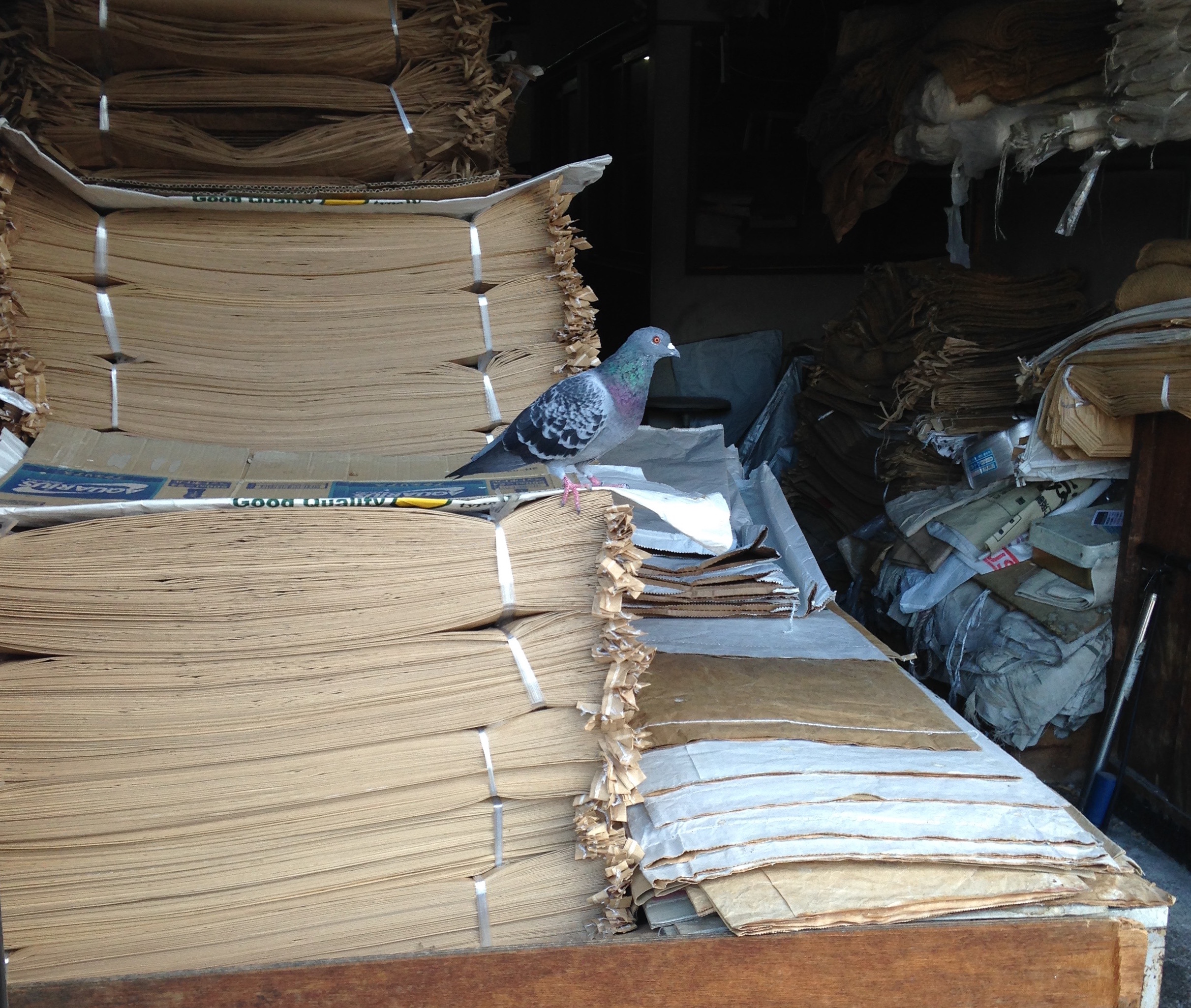Kyoto: Free Day
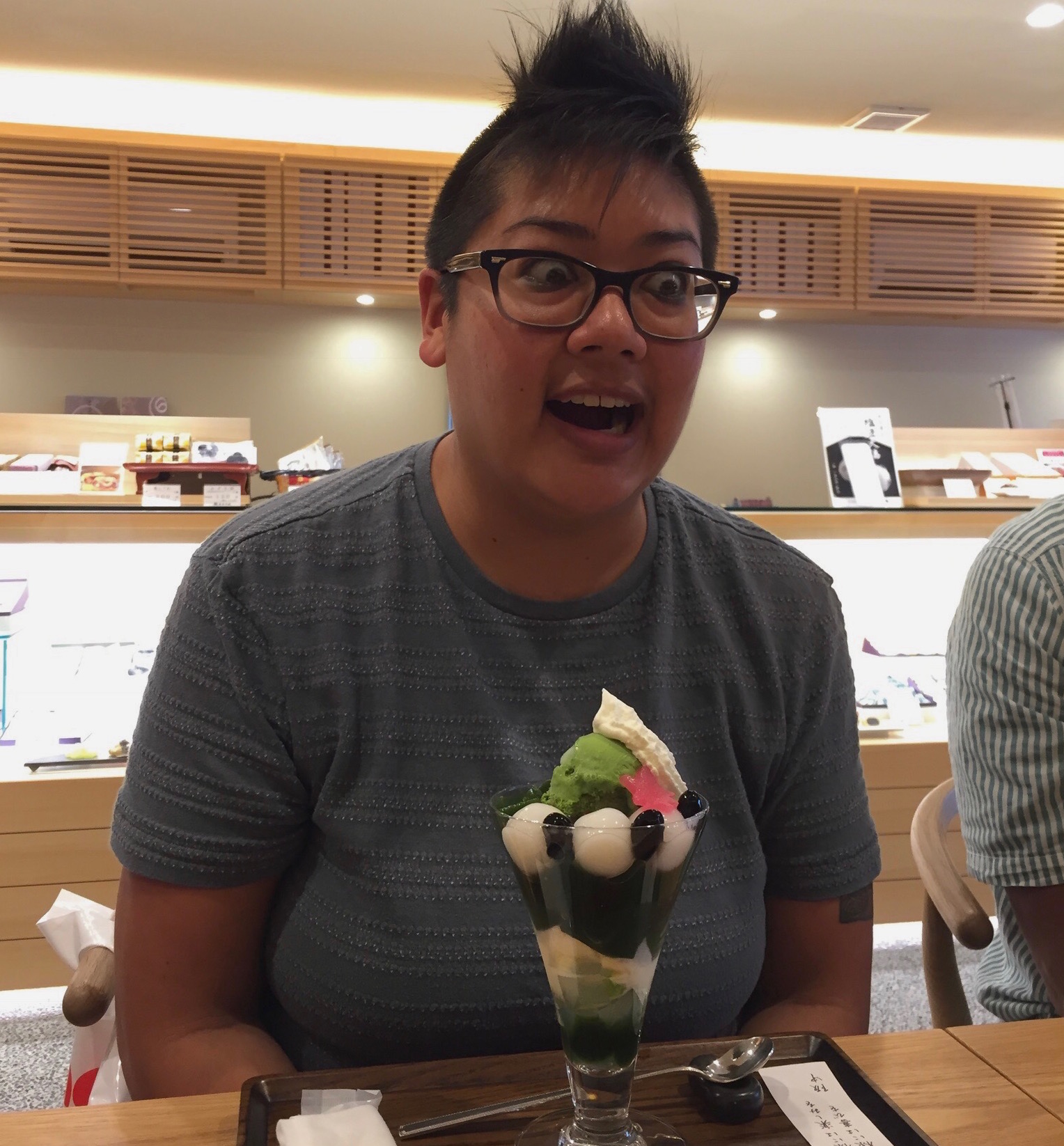
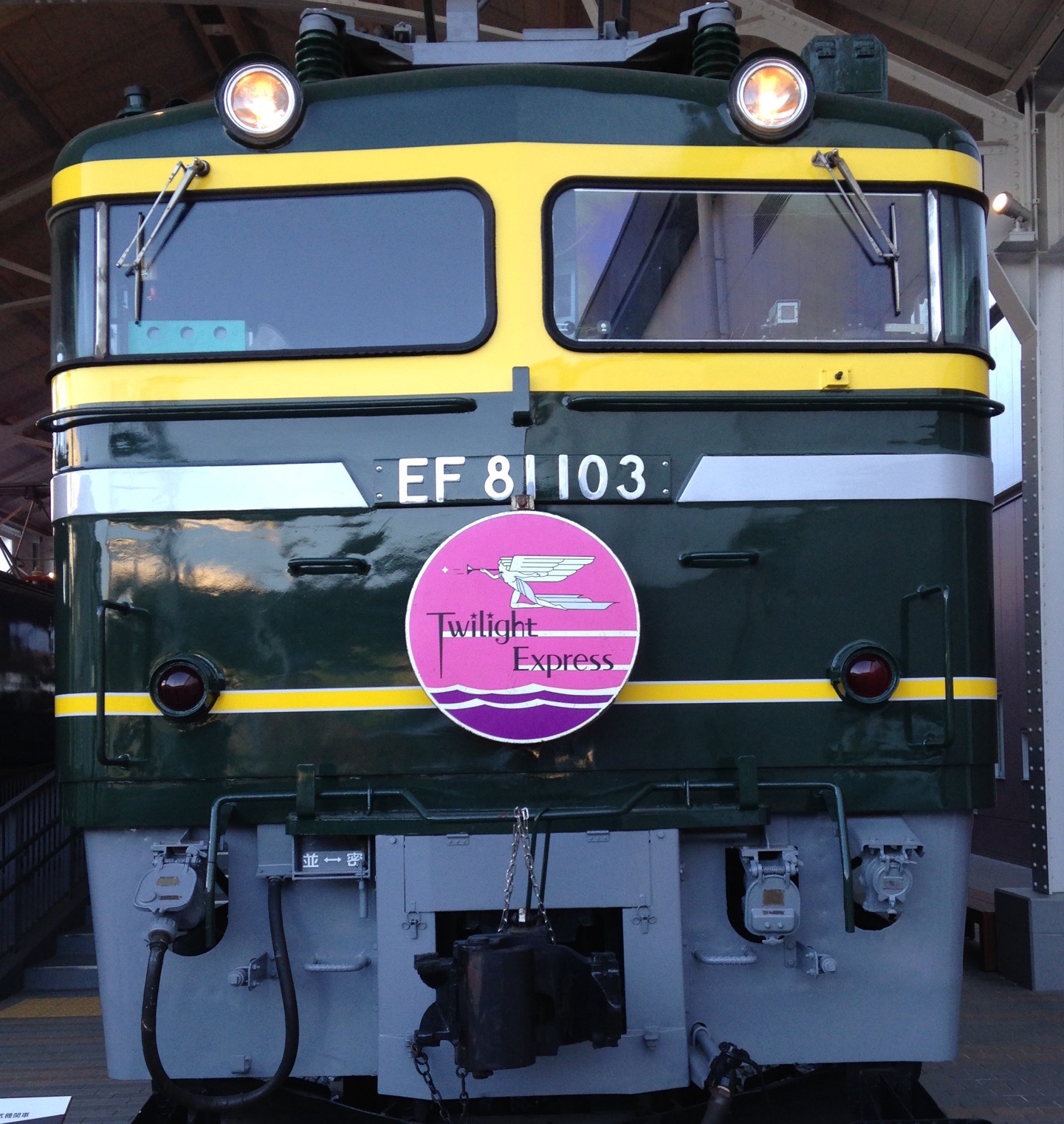
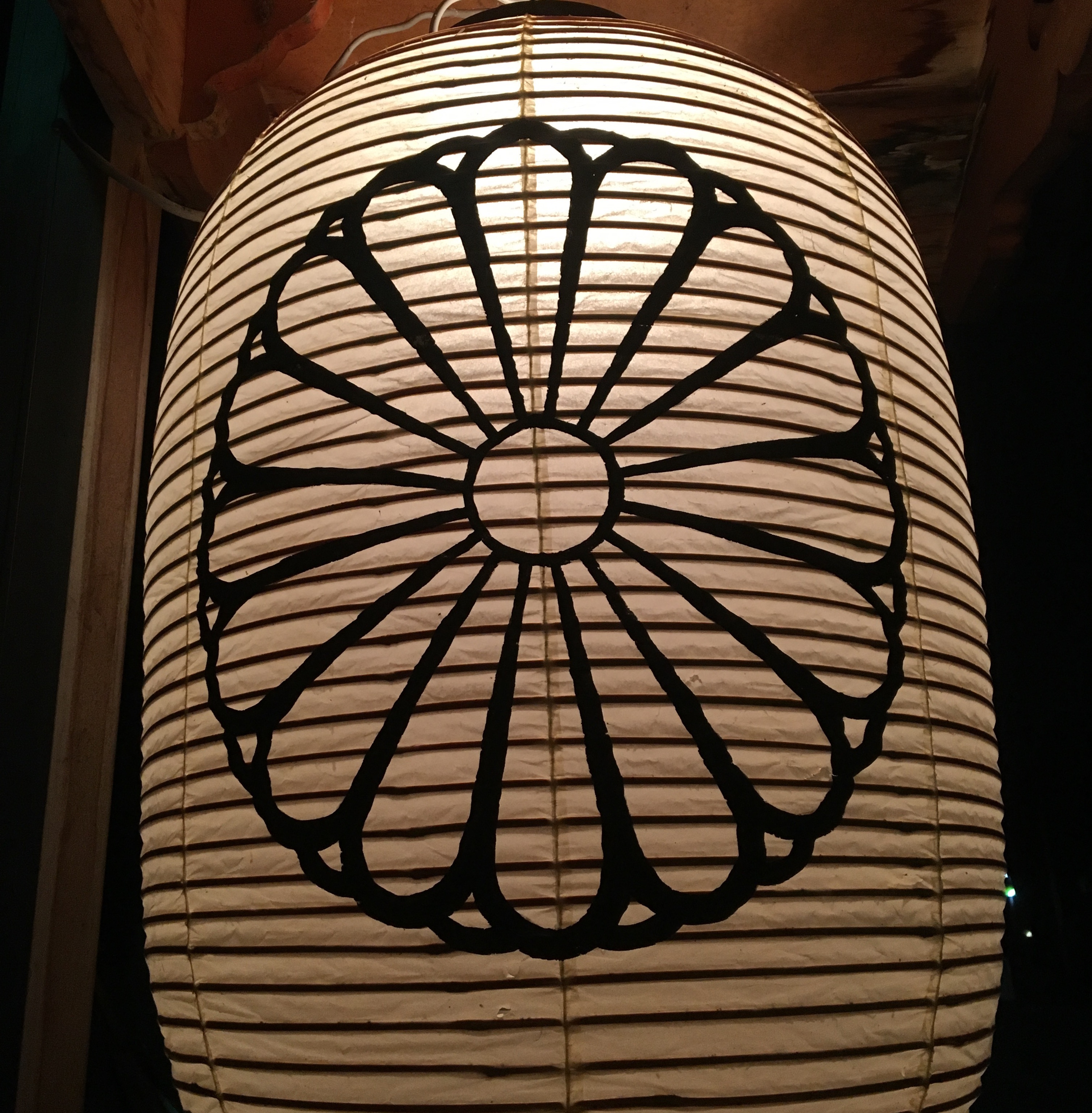
Balaram:
The day began as a free day, one that had been left purposely unplanned by Lori and Linda. The night before we decided to go to Nishiki market—to visit the famed knife store, Aritsugu, the Kyoto train museum and if possible, visit the Fushimi-Inari Taisha Shrine, the temple of gates.
In our treks back and forth between Kyoto station and our apartment, we regularly passed Aeon Mall, which among other stores, had a donut shop called “Jack in the Donuts.” This prompted an immediate query: How do you get Jack IN the donuts? (An obvious reference to the line from My Cousin Vinny: “How do you get mud IN the tires?”). To find out, we sampled, over the course of several days, a variety of their donuts. In general, they are less sweet than US donuts but the consistency is different too. One was like a bagel with matcha frosting, e.g. A DINO- Donut in Name Only! The best were the old-fashioned, which were like a less sweet version of the real thing. (The matcha-kinako old-fashioned was one of my favorite donuts of all time! -Mäneka) So after a breakfast of a variety of things including fruit, granola, yogurt and Jack’s donuts we headed off to the Aeon Mall to drop off our bags at the grocery store Kohyo for them to be shipped off to our next residence in Tokyo by the time we arrive Saturday afternoon.
Then we had a short trip on the subway to Nishiki market. It’s a covered narrow street—a wide alley actually—lined by shops and food stalls. This is featured in many of the guidebooks so it was crowded with lots of foreigners. Aritsugu is a small, high-end knife and cooking implement store that is packed with people, since it’s also featured in tourist pamphlets and guides. The patrons come in waves so one had be patient and catch the lull in the flow to get the attention of an employee. Mäneka looked at several knives and purchased a multi-purpose knife with a European handle.
We wandered through the market to taste samples and eventually came to an even smaller alleyway which was very nice, clean and lined with small shops and restaurants. Lori and Linda found a paper shop that they spent time exploring and Kamala and Mäneka wandered further and bought T-shirts while looking for a restroom. We then began a long walk to the train museum, which was a bit further than any of us actually expected. But it was a nice day and allowed us to look at the shops and residences along the way. We stopped at a parfait and sweets shop called Iori for a break and enjoyed the wonderfully layered parfaits and coffee. Our waitress had lived in Ottawa for 14 years and had only recently moved back to Kyoto so we were able to speak with her a bit in English. Apparently the store has been in the same family for 300 years!
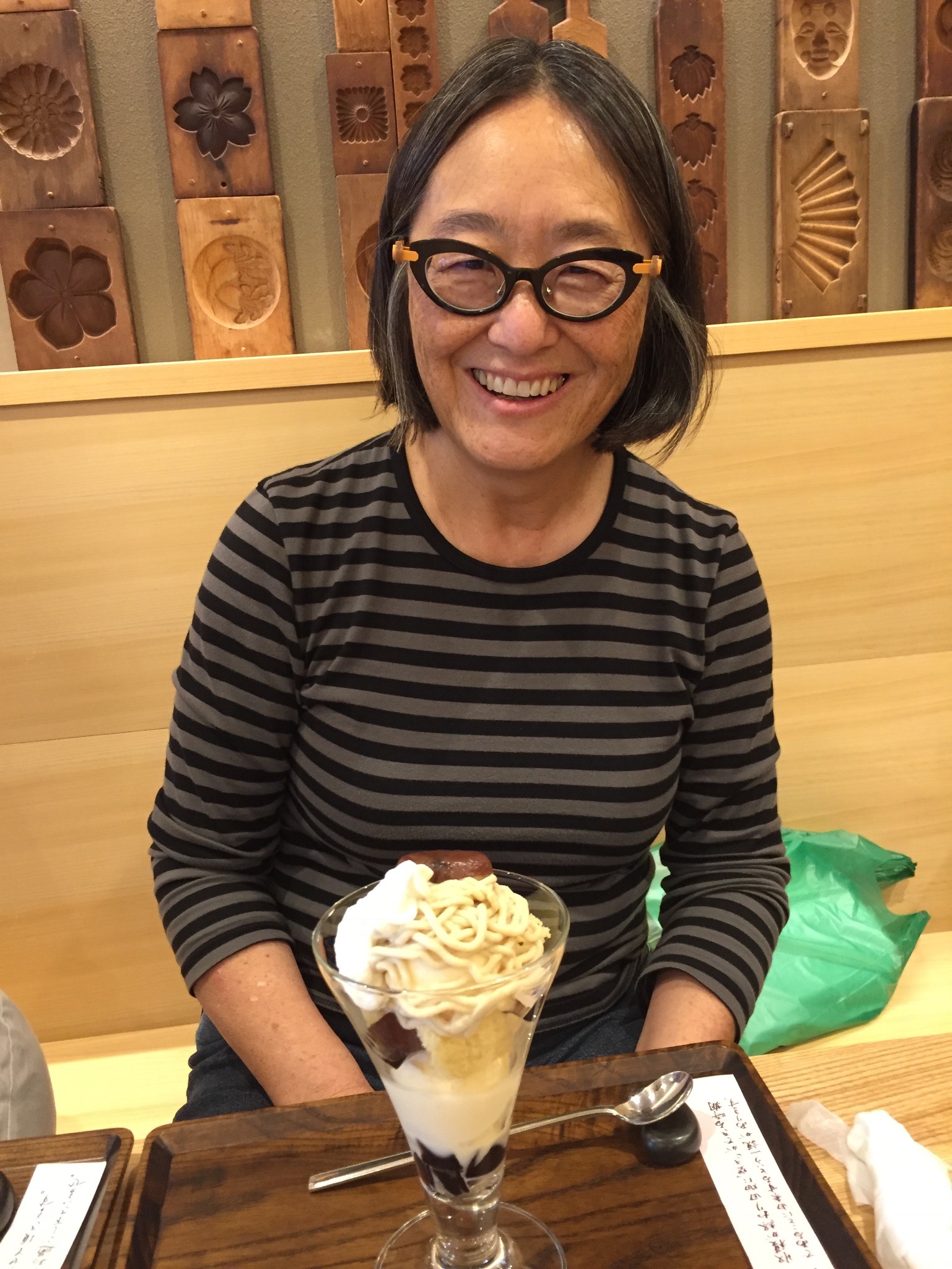
We made it to the train museum with about 2 hours before closing and it was not quite enough, but we did get to look at and walk into several of the trains, including the first versions of the Shinkansen. The high speed rail efforts began in the ’60s while the US was engaged with the moon landing. Admittedly a cool thing, but the Japanese now have an excellent high speed rail system that is affordable and reliable. These can go 180 MPH safely on designated tracks. The fastest US trains go up to 80 MPH and most much slower than that since they must share tracks with freight trains that get priority. We all know how poor the maintenance of our infrastructure is, but for trains it is abysmal which means delays and safety issues.
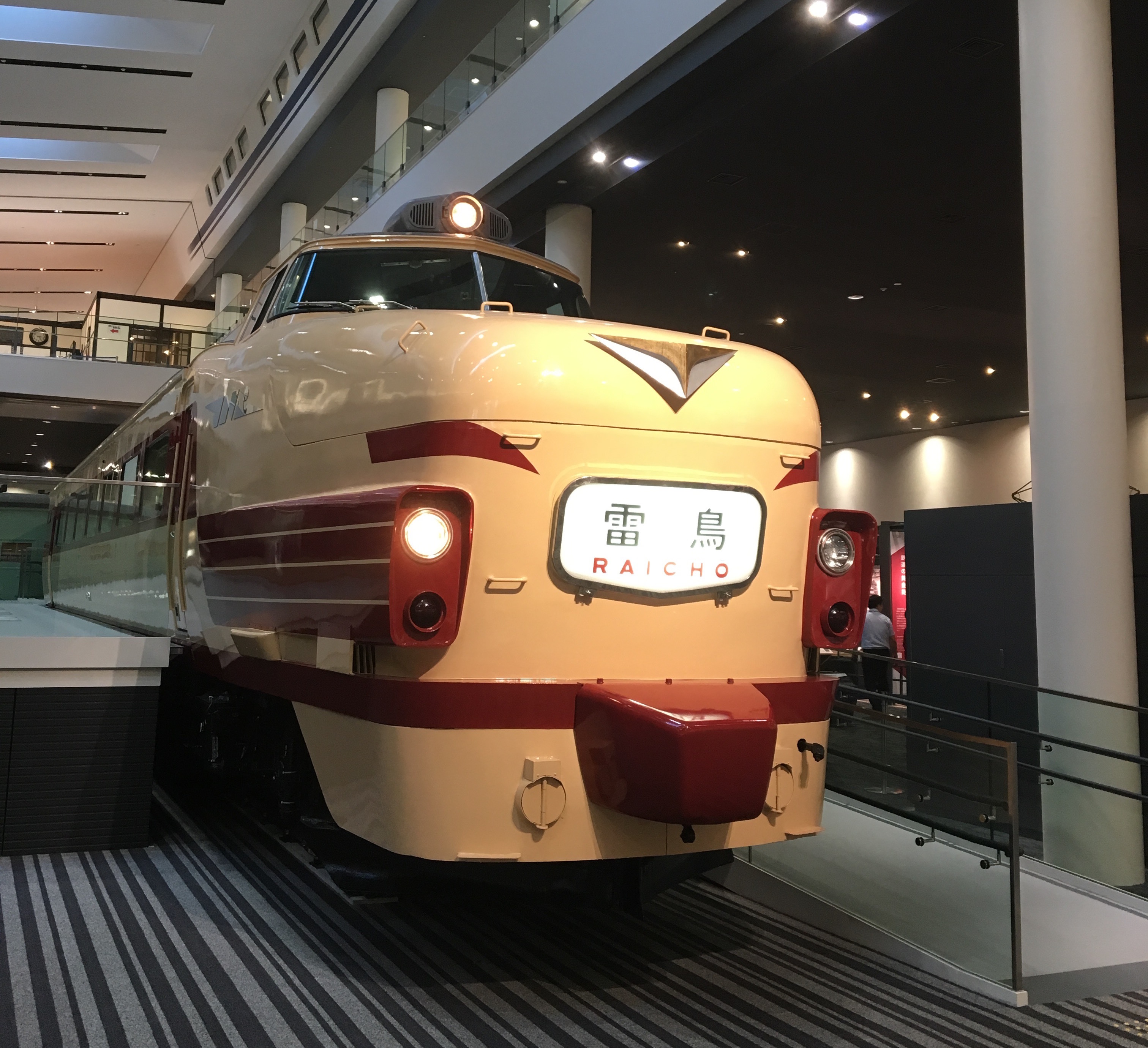
The US used to be the best at trains which is one reason we could build the Panama Canal and France could not. Alas, in addition to losing civility as a nation and people we seem to have lost the desire and or interest in doing things well! Recall my comments on the United flight to Tokyo. Yes, it was a safe flight, but the service and overall quality was poor and no one would expect otherwise. Probably not even the United Executives. The focus seems to be what can we get away with, how many corners can be cut and what minimal things will customers put up with. Ditto Wells Fargo. These are the biggest and seemingly among the most successful of American companies. Sad state of affairs. But this does not seem to the case in Japan. All the more reason to relish this trip!
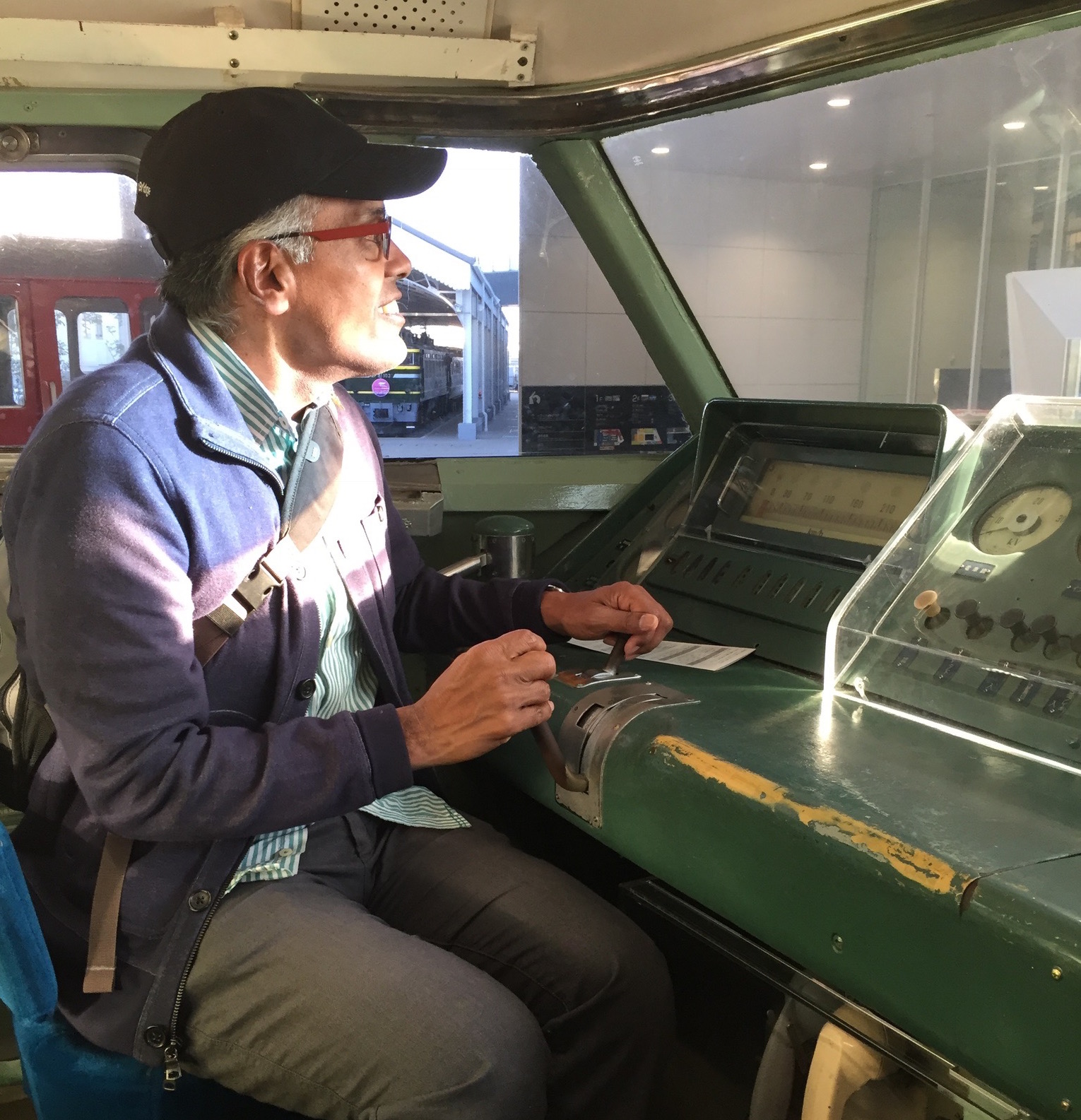
We decided to go to Fushimi-inari even though it was getting dark. Because it was not clear if we could get there with our JR passes, we took two taxis from a hotel near Kyoto station. There was an active anti-nuclear/anti war protest adjacent to the hotel, which involved a woman singing out and a response from the others. With a simple drum beat as cadence. Eventually a couple of men took over, but the women were better from what I could tell, not understanding a word they were singing. (Often women are as good or even better at most things but we don’t get this yet as a society.)
Fushimi-Inari at night with a near full moon is spectacular! The bright orange gates with the lights, lanterns and statues are a sight to behold. Lots of people were there. It is free and open 24 hours. The path winds up a mountain and back, apparently a 2-3 hour trip. We spent about an hour and a half there and it was special. Lots of young women in kimonos. Turns out many are Chinese. Reminds me of the Harvard T-shirt phenomenon: a person wearing a Harvard shirt most likely did not attend any of the Harvard schools. So it seems that many women wearing kimonos are probably not Japanese.
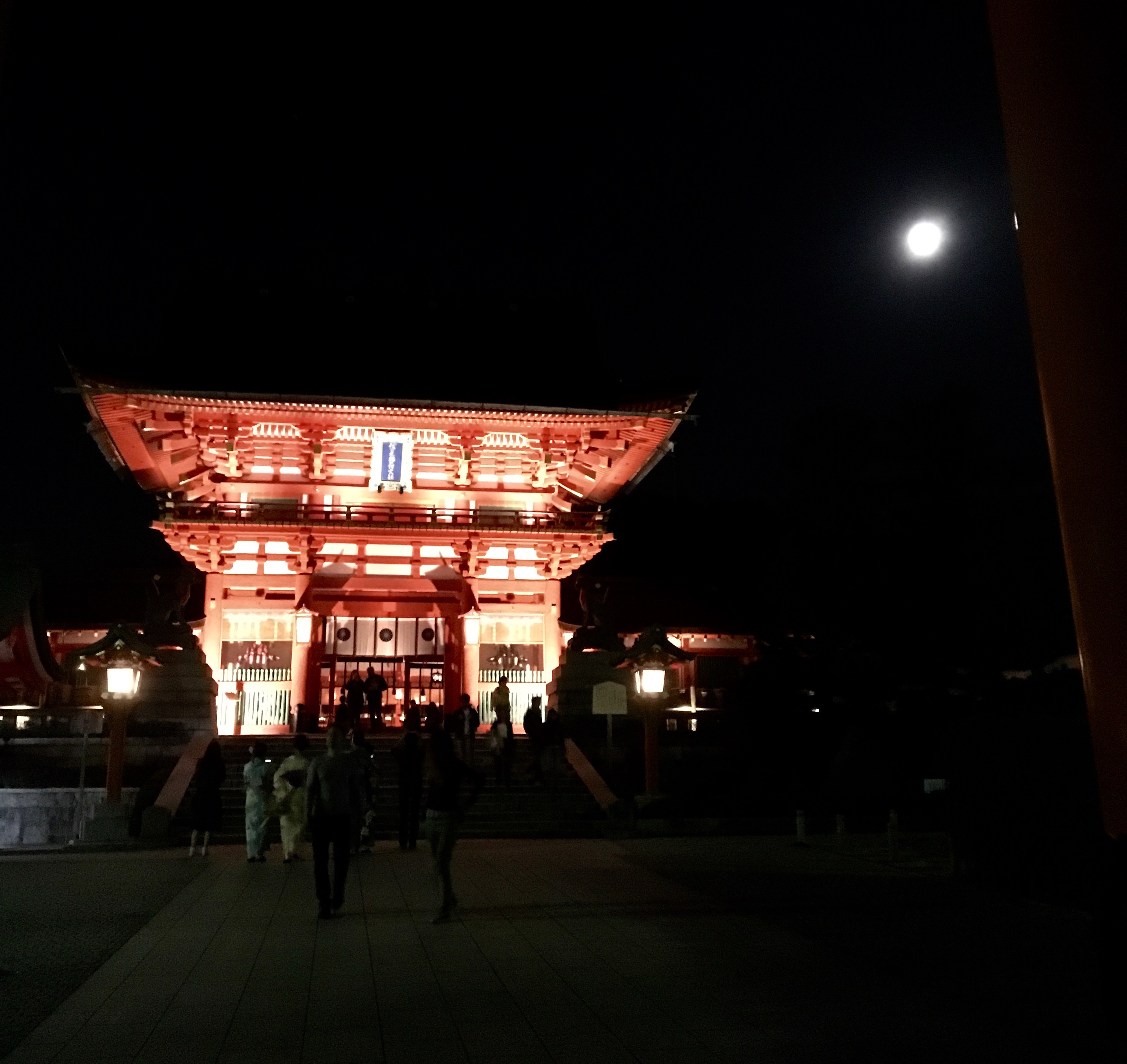
We concluded the evening with a nice dinner at Konoko, a restaurant not far from the shrine in Inari. We all had really nice food, though we had to put up with the ramblings of a trio of Canadians who shared our large round table.
Mäneka:
We met a cute feathered friend working in a cardboard box warehouse! 💖
